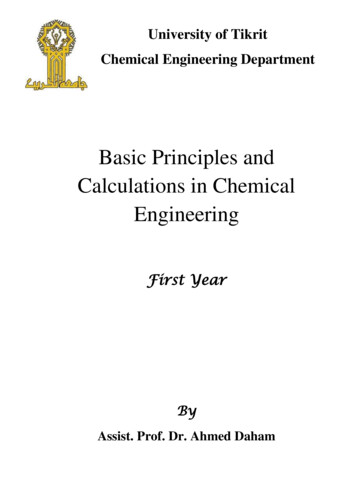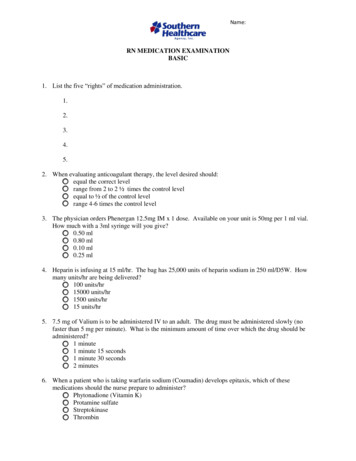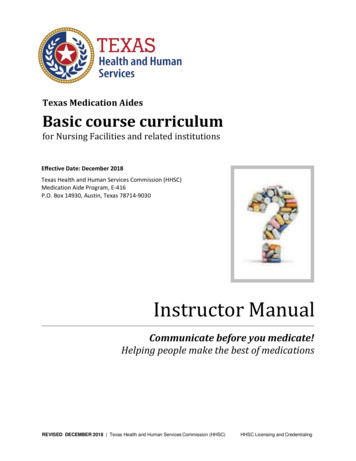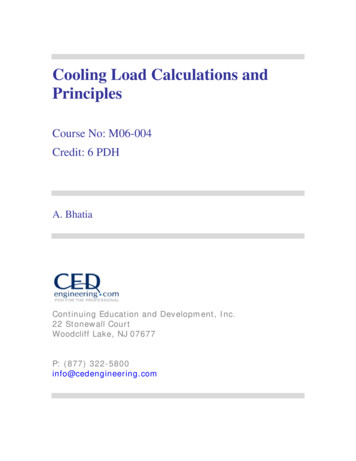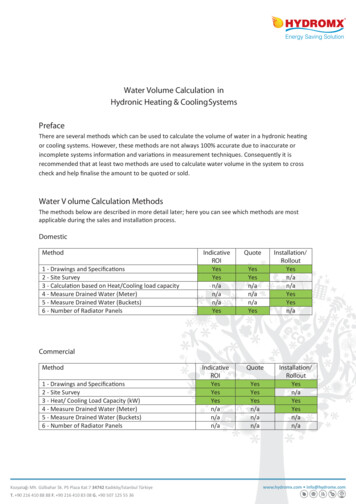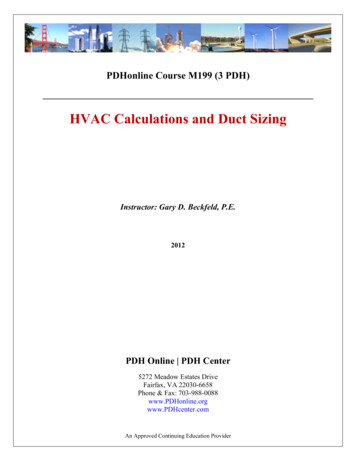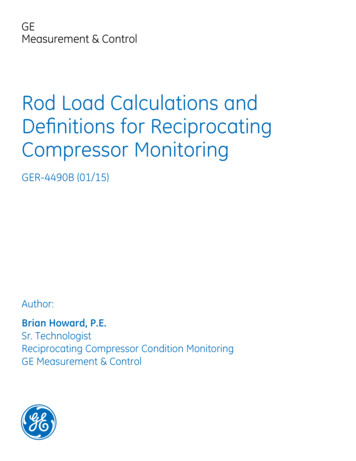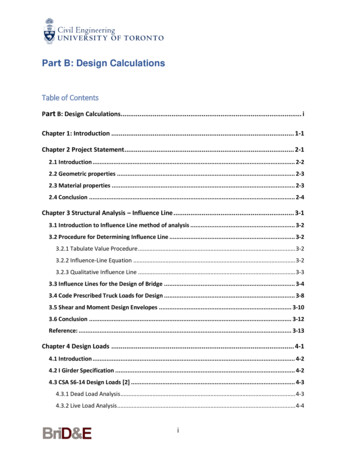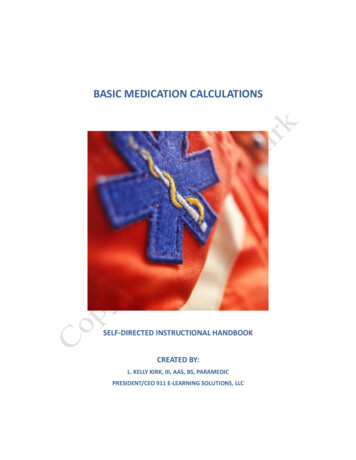
Transcription
BASIC MEDICATION CALCULATIONSSELF-DIRECTED INSTRUCTIONAL HANDBOOKCREATED BY:L. KELLY KIRK, III, AAS, BS, PARAMEDICPRESIDENT/CEO 911 E-LEARNING SOLUTIONS, LLC
INSTRUCTIONAL PACKAGEIntroduction:This lesson is designed to help you learn the basics of drug calculations.Objective 1:At the end of this lesson you will be able to accurately convert within the metricsystem between kilograms, grams, milligrams, and micrograms.Objective 2:At the end of this lesson the learner will be able to accurately convert patient weightfrom pounds into Kilograms.Objective 3:At the end of this lesson the learner given a medication mixed into a solution, will beable to determine the proper medication concentration.Instructions:To complete this packet you should read through the material.Whenever you see this icon:Your Turnto PracticeYou will be given the opportunity to practice that which you just learned. Try tocomplete each problem without looking up the answers. Once you have completed theproblem, you should check your answers with the ''Answer Key" provided at the end ofthe packet. You will also find some additional resources for you to review and studyfurther by going to the internet. Once you feel comfortable with the topics, you canproceed to the final quiz.Success:Successful completion of this packet will be awarded when the packet has been turned into your Training Officer and you have scored a minimum of 70% on the Final Quiz.
Lesson 1: Basic ConversionsObjective 1:At the end of this lesson you will be able to accurately convert within the metric systembetween kilograms, grams, milligrams, and micrograms.Introduction:You have just received orders to administer an extremely toxic medication to yourcritically ill patient. This medication is so toxic that the dosing is given in milligramsper microgram of weight. Your patient weighs 356 kilograms. How many microgramsdoes he weigh?Tough scenario right? We don't often have to convert from kilograms into micrograms.This is one of the easier conversions however.Let's review the units of measurement from largest to smallest: Kilograms (kg)LARGER UNITS Grams (g) Milligrams (mg) Micrograms (mcg)SMALLER UNITSEach unit is 1000 times smaller than the next. So for example, 1 kg is 1000g and 1g is1000mg. In order to convert one to the other you simply put the original number in itslocation and move your decimal three (3) places to the RIGHT for each space you moveif you are going from Larger units to Smaller units or three (3) places to the LEFT foreach space you move if you are going from smaller units to larger units.Look at the example below: 1 Kilogram 1000 Grams 1000000 Milligrams 1000000000 MicrogramsSo now lets go back to our original scenario and determine how many micrograms are in356 kilos. 356kg356000g356000000mg356000000000mcgSo you now know that there are 356 million micrograms in 356 kilograms! As you willsee, moving items within the metric system is one of the more simple conversionscompared to household measures and converting within other systems.
Objective 2:In the USA we commonly use pounds (lbs) to measure weight while most other countriesuse the metric system and weigh in kilograms (kg). Now of course moving from poundto kilograms or kilograms to pounds is not as easy as converting within the metricsystem. Instead, you have to use a little more math, but overall, it is still very simplemath. The only thing you need to be aware of is the constant (2.2). There are 2.2pounds in every kilogram. Therefore 1kg 2.2lbs Fortunately for us, we normallyonly convert from pounds to kilograms and seldom ever the other way around.The Formula:Kilograms equals the weight in pounds divided by 2.2kg lbs / 2.2Therefore a 220lb man weighs exactly 100kg220/2.2 100To convert from kilograms to pounds, you simply multiply the weight in pounds by 2.2lbs kg * 2.2Therefore a 70kg woman would weigh 154lbs70 * 2.2 154When you are performing your calculations, it is EXTREMELY IMPORTANT that youpay attention to what unit of measure (lbs/kg/mg/g) you are working with and what unityour order is in. Generally the order is in kg but don't assume that! ASSUMPTIONSwill cost someone their job and possibly a life!
Your TurnOrder:to PracticeAnswer:Answers are provided in the "Answer Key" in the back of this manual.1. Weight: 150lbsConversion: lbs to kg2. Weight: 130lbsConversion: lbs to kg3. Weight: 25kgConversion: kg to lbs4. Weight: 98kgConversion: kg to lbs5. Weight: 130lbsConversion: lbs to mg6. Weight: 1800gConversion: g to kg7. Weight: 2500mgConversion: mg to gReview and Remediate:After completing all of the above problems, flip to the answer key in the back of thistraining manual to compare your answers. Here you will find the answers to thequestions with detailed rationale as to why the answers are what they are.More Help:You can go online for more practice and remediation at the following rsing/muc/length-b-muc.htm
Objective 3:At the end of this lesson you will be able to determine the proper medicationconcentration in an IV solution.Introduction: You are treating a 48 year old male with chest pain and polymorphic PVCsover 12 a minute. After giving him a 150mg bolus of Lidocaine, you are ordered tohang a drip. After you mixed 20% Lidocaine into 250cc of D5W, what is yourconcentration of Lidocaine?Now we are getting to the tougher stuff, wouldn't you say? Never fear, you took thatlast lesson so well, this one will be a breeze for you! To complete this problem yousimply need to take it step by step until you get to the final answer.In order to determine the concentration of a solution (how much medication is in eachml ) you must know two values. How much medication is in the entire amount(ml) of solution. How much solution (ml) do you have on hand.With this first problem you have 250 cc of fluid (D5W) and 2g (20%) of Lidocaine on hand.Now all we need is the proper formula and we are set!
The Formula:NOTE of Interest: Pay close attention to what the order is given in, most of thetime the order is given in a smaller unit of measure than the concentration youhave on hand.For example:Lidocaine ordered in mg and is on hand in gramsThis means you have to CONVERT your units of measure before you start working yourproblems otherwise you will come up with the wrong answer!So in this instance we have 2g of Lidocaine and have to convert that into mg. As welearned earlier, 2g of Lidocaine is 2000mg of Lidocaine.To determine the concentration of a medication you must use the formula:Medication divided by fluid on handM (Medication)F (Fluid on hand)Now it is simply knowing where the numbers go and then working the problem.The Fluid (F) is 1 on hand is 250cc of D5WThe Medication (M) on hand is 2 grams of Lidocaine (remember.the order is in mg)2g/250mlconvert the grams to mg:2000mg / 250 mlNow work the problem:8mg/ml
Your TurnOrder:to PracticeAnswer:Answers are provided in the "Answer Key" in the back of this manual.8. Medication: 2g of LidocaineVolume of Fluid: 500mlOrder is in: mg9. Medication: 800mg of DopamineVolume of Fluid: 500mlOrder is in: mcg10. Medication: 400mg of DopamineVolume of Fluid: 250mlOrder is in: mcg11. Medication: 2g of LidocaineVolume of Fluid: 1000mlOrder is in: mg12. Medication: 5g of BretyliumVolume of Fluid: 500mlOrder is in: mg13. Medication: 1600mcg DopamineVolume of Fluid: 1000mlOrder is in: mcg14. Medication: 2mg of LidocaineVolume of Fluid: 250mlOrder is in: mgReview & Remediation:After completing all of the above problems, flip to the answer key in the back of thistraining manual to compare your answers. Here you will find the answers to thequestions with detailed rationale as to why the answers are what they are.More Help:You can go online for more practice and remediation at the following sites:http://www.davesems.com/files/drug dose /Afreski0vDs
After you have prepared yourself, you will be ready to take the final quiz below.Complete the quiz without using any notes or additional support.Assessment:Instructions: Complete each order below writing your final answer in the Answer"column on the right. Be sure to include the proper unit of measure. If the unit ofmeasure is not correct or not included, the answer will be marked wrong.Final Quiz:Order:1. Weight: 110lbsConversion: lbs to kg2. Weight: 160lbsConversion: lbs to kg3. Weight: 205kgConversion: kg to lbs4. Weight: 97kgConversion: kg to lbs5. Weight: 13lbsConversion: lbs to mg6. Weight: 180gConversion: g to kg7. Weight: 200mgConversion: mg to g8. Weight: 8750gConversion: g to mg9. Weight: 85mgConversion: mg to g10. Weight: 125lbsConversion: lbs to mg11. Medication: 2g of LidocaineVolume of Fluid: 1000mlOrder is in: mg12. Medication: 5g of BretyliumVolume of Fluid: 500mlOrder is in: mg13. Medication: 1600mcg DopamineVolume of Fluid: 1000mlOrder is in: mcg14. Medication: 2mg of LidocaineVolume of Fluid: 250mlOrder is in: mgAnswer:
Answer KeyAnswers to practice problems 1-141.2.3.4.5.Order:Weight: 150lbsConversion: lbs to kgWeight: 130lbsConversion: lbs to kgWeight: 25kgConversion: kg to lbsWeight: 98kgConversion: kg to lbsWeight: 130lbsConversion: lbs to mg6. Weight: 1800gConversion: g to kg7. Weight: 2500mgConversion: mg to g8. Medication: 2g of LidocaineVolume of Fluid: 500mlOrder is in: mg9. Medication: 800mg of DopamineVolume of Fluid: 500mlOrder is in: mcg10. Medication: 400mg of DopamineVolume of Fluid: 250mlOrder is in: mcg11. Medication: 2g of LidocaineVolume of Fluid: 1000mlOrder is in: mg12. Medication: 5g of BretyliumVolume of Fluid: 500mlOrder is in: mg13. Medication: 1600mcg DopamineVolume of Fluid: 1000mlOrder is in: mcg14. Medication: 2mg of LidocaineVolume of Fluid: 250mlOrder is in: mgAnswer:150 / 2.2 68.2kg130 / 2.2 59.1kg25 * 2.2 55lbs98 * 2.2 216130 / 2.2 59.1 kgLOOK at the order.you need to convert to mg.59.1kg is 59100g or 59100000mg59100g is 59100000mgFinal Answer: 59,100,000 mg1800 g is 1.8kg (Move decimal 3x to left)2500mg is 2.5g (move decimal 3x to right)2000mg / 500ml (Converting to mg)4mg/ml800000mcg / 500ml1600mcg/ml400000mcg / 250ml1600mcg/ml2000mg / 1000ml2mg/ml5000mg / 500ml10mg / ml1600mcg / 1000NOTICE: Order is in mcg and concentration is in mcgtherefore there is no need to convert the medication.1.6mcg/ml2mg/250mlSame here.no need to convert!0.008mg/ml
BASIC MEDICATION CALCULATIONS SELF-DIRECTED INSTRUCTIONAL HANDBOOK CREATED BY: L. KELLY KIRK, III, AAS, BS, PARAMEDIC PRESIDENT/CEO 911 E-LEARNING SOLUTIONS, LLC. INST
